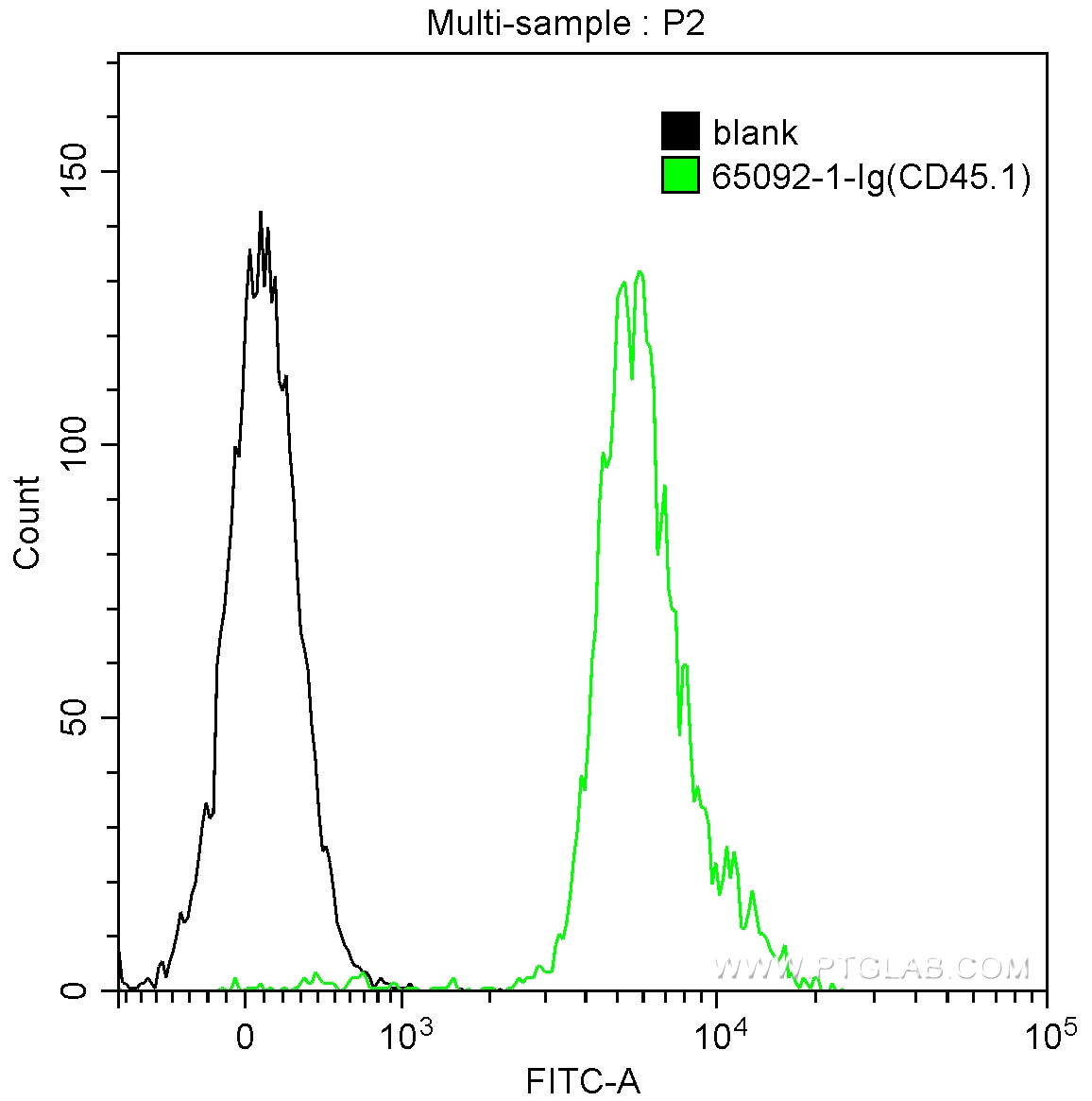CD45.1 Monoklonaler Antikörper
CD45.1 Monoklonal Antikörper für FC
Wirt / Isotyp
Maus / IgG2a
Getestete Reaktivität
Maus
Anwendung
FC
Konjugation
Unkonjugiert
CloneNo.
A20
Kat-Nr. : 65092-1-Ig
Synonyme
Galerie der Validierungsdaten
Geprüfte Anwendungen
| Erfolgreiche Detektion in FC | SJL-Maus-Splenozyten |
Empfohlene Verdünnung
| Anwendung | Verdünnung |
|---|---|
| This reagent has been tested for flow cytometric analysis. It is recommended that this reagent should be titrated in each testing system to obtain optimal results. | |
| Sample-dependent, check data in validation data gallery | |
Produktinformation
65092-1-Ig bindet in FC CD45.1 und zeigt Reaktivität mit Maus
| Getestete Reaktivität | Maus |
| Wirt / Isotyp | Maus / IgG2a |
| Klonalität | Monoklonal |
| Typ | Antikörper |
| Immunogen | SJL-Maus-Thymozyten und -Splenozyten |
| Vollständiger Name | protein tyrosine phosphatase, receptor type, C |
| GenBank-Zugangsnummer | BC028512 |
| Gene symbol | Ptprc |
| Gene ID (NCBI) | 19264 |
| Konjugation | Unkonjugiert |
| Form | Liquid |
| Reinigungsmethode | Affinitätsreinigung |
| Lagerungspuffer | Phosphatbasierter Puffer mit 0,09% Natriumazid, pH 7,2. |
| Lagerungsbedingungen | Bei 2-8℃ lagern. |
Hintergrundinformationen
CD45, also known as protein tyrosine phosphatase, receptor type C, is a type I transmembrane protein expressed on the surface of all haematopoietic cells with the exception of erythrocytes and platelets (PMID: 3489673; 28615666). CD45 is a pan-haematopoietic cell marker and has been shown to be essential for T- and B-cell activation and signalling (PMID: 9429890; 16378097). Allelic variants of mouse CD45, CD45.1 (Ly5.1) and CD45.2 (Ly5.1), have been established as a marker system to track haematopoietic cells following congenic mouse bone marrow transplants (PMID: 28615666). CD45.2 is the common form and is expressed by most of the established strains, while CD45.1 is found in only a few like the SJL mouse strain (PMID: 3489673).
Protokolle
| Produktspezifische Protokolle | |
|---|---|
| FC protocol for CD45.1 antibody 65092-1-Ig | Protokoll herunterladen |
| Standard-Protokolle | |
|---|---|
| Klicken Sie hier, um unsere Standardprotokolle anzuzeigen |


